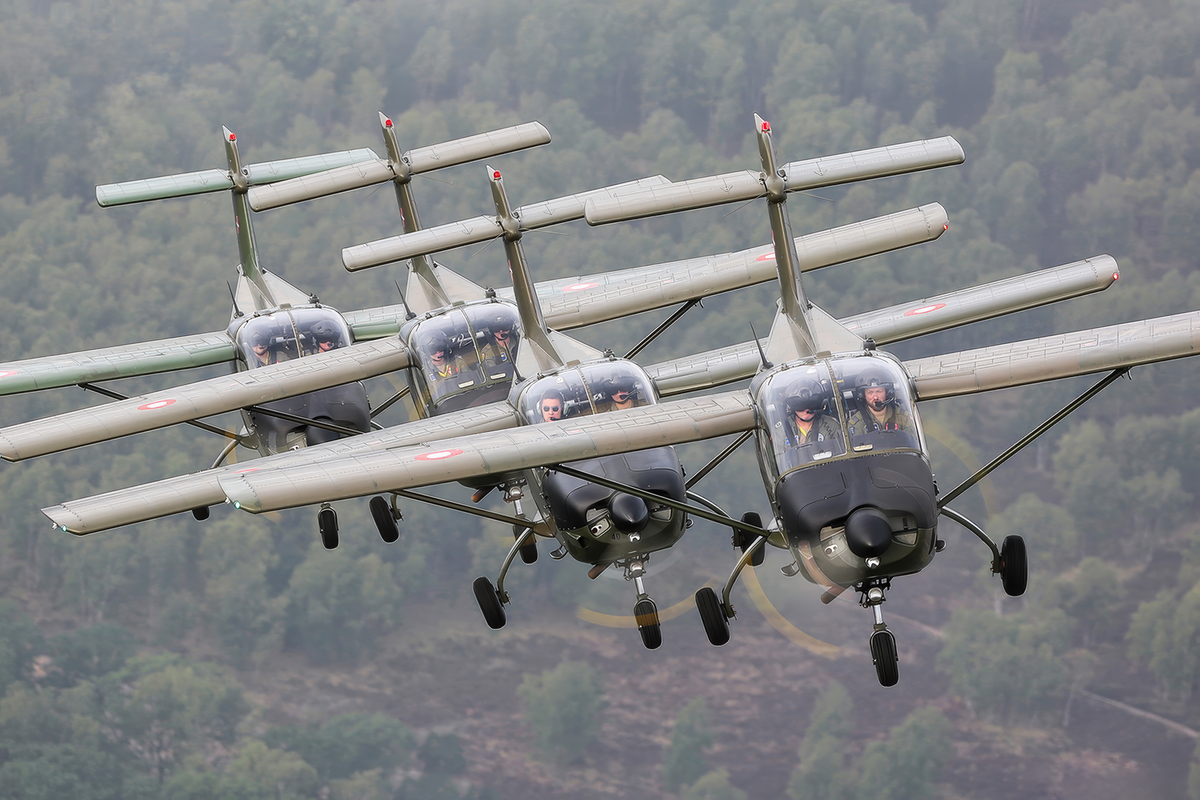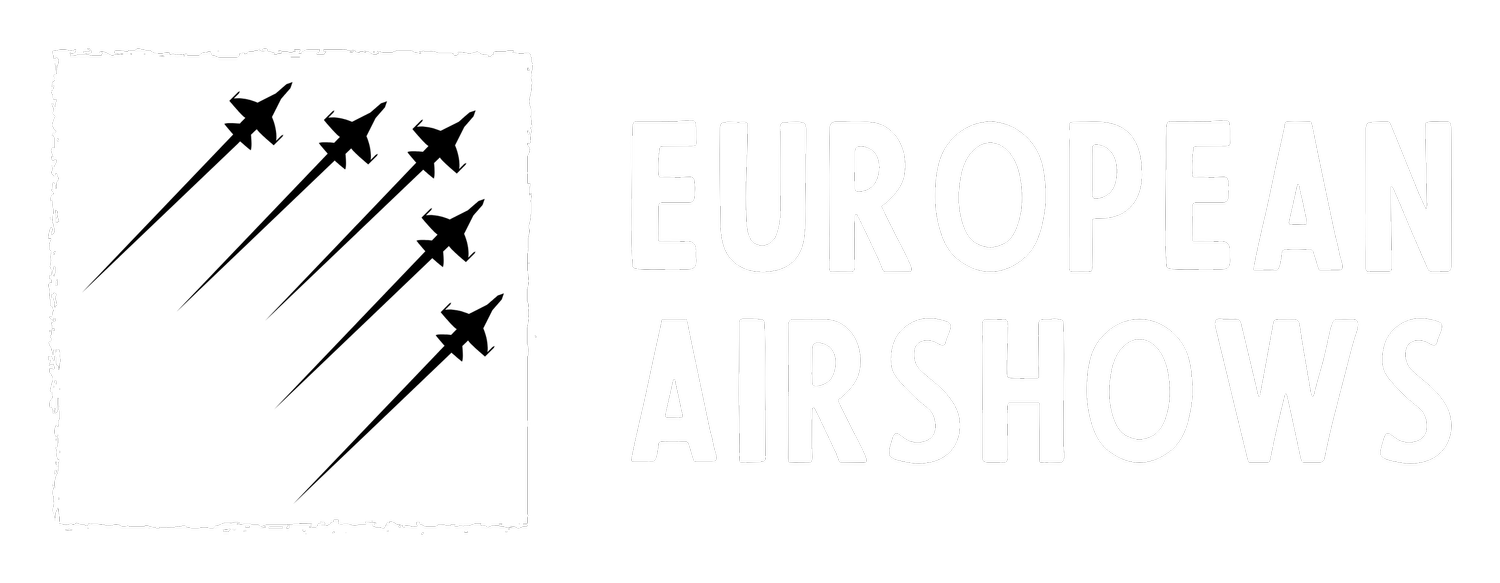
Baby Blue
About the Team
“Baby Blue” is the official aerobatic team of the Royal Danish Air Force (RDAF), operating under the auspices of the RDAF Flying School located at Karup airbase in western Denmark. The team is composed of Four to Six Swedish-built Saab T17 Supporter aircraft, which are recognized for their robustness and agility. Each aircraft is capable of withstanding forces of +6g and -3g, powered by the reliable Lycoming 10-360-A1B6 boxer engine that generates 200 horsepower.
The pilots of Baby Blue are all volunteer flight instructors from the Flying School, each bringing a diverse array of aviation backgrounds and experiences to the team. This blend of expertise not only enhances the team’s performance but also fosters a spirit of camaraderie and teamwork. While the team primarily conducts local displays and flypasts, its mission extends beyond entertainment; it aims to inspire the younger generation to consider a future in aviation and the Danish Air Force. The Saab T17 Supporter, known in Denmark for its high-wing construction and all-metal fuselage, is designed for strength and versatility, accommodating two or three occupants based on configuration. The cockpit features a side-by-side seating arrangement, allowing for collaborative training between instructors and students.
Despite its strengths, the T17 is susceptible to turbulence, presenting a unique challenge during formation flying. The pilots must exert considerable effort to maintain tight formations throughout their 10-minute display routines, showcasing their skill and dedication. Baby Blue’s performances are characterized by precision and synchronization, making them a highlight at various air shows and community events across Denmark.
Team Overview
Number of Aircraft
4 to 6
Established
mid-1980s
Based
Karup Air Base
Aircraft Type
SAAB T-17 Supporter
About the aircraft
The Saab MFI-17 Supporter, designated as the T-17 in the Royal Danish Air Force, is a Swedish-designed light military trainer and utility aircraft. Originally developed in the early 1970s by Motorflygindustrin (MFI), the Supporter was created to provide a reliable and straightforward platform for basic pilot training, liaison tasks, and various utility roles. Its high-wing configuration, single-engine design, and robust construction make it well-suited for ease of handling and durability.
In 1975, Saab acquired MFI, integrating the Supporter into its aerospace portfolio. This acquisition enhanced the aircraft’s production capabilities and support infrastructure, allowing for broader distribution and maintenance support. The Danish Air Force adopted the aircraft as the T-17 Supporter, utilizing it primarily for training new pilots and supporting operational missions that require a versatile and dependable aircraft.
Team History
The history of Baby Blue is steeped in tradition and evolution. For many years, it has been customary for aircraft from the Flyveskolen to perform a poignant flypast at Svinøkirke at sunset on May 4th, coinciding with a memorial service commemorating Denmark’s liberation during World War II. This solemn event features four aircraft flying in a Finger Four formation over the church, followed by a Missing Man formation to honor fallen allied pilots. The call sign for this formation is Baby Blue, a name that would eventually become synonymous with the aerobatic team.
Inspired by these flypasts, instructor pilots began practicing close formation flying during their spare time. By the mid-1980s, they successfully executed their first display with four aircraft flying in close formation, marking the inception of the Baby Blue project. However, as the original instructor pilots transitioned out of the Flyveskolen, the project faced an inevitable pause.
In 1993, a significant turning point occurred when the Flyveskolen relocated to Karup, coinciding with the retirement of the Draken aircraft. This transition brought a wave of former Draken pilots into the Flying School as instructors, many of whom were eager to revive the Baby Blue initiative. One of the original members of Baby Blue had ascended to the position of Operational Boss at the Flyveskolen, facilitating the project’s revival.
The new cadre of instructor pilots infused the team with fresh ideas and ambitions for their display routines. However, they quickly realized that the maneuvers executed in the Draken could not be directly adapted to the capabilities of the T-17. Undeterred, they crafted a new display routine that surpassed the complexity of their predecessors’ performances in the 1980s. This revamped routine received approval from the Tactical Air Command, allowing Baby Blue to once again grace the skies with their synchronized displays.
Today, Baby Blue stands as a cherished fixture at Danish air shows and has expanded its reach to international events, showcasing the skill and dedication of the Royal Danish Air Force while continuing to inspire future generations of aviators.
Did You Know?
- Baby Blue serves as the official aerobatic team of the Royal Danish Air Force, based at the RDAF Flying School in Karup airbase, Western Denmark.
- The team flies four to six Swedish-built Saab T17 Supporter basic trainer aircraft, each powered by a 200 HP Lycoming 10-360-A1B6 boxer engine and rated to handle +6g and -3g forces.
- All pilots in Baby Blue are volunteer flight instructors from the Flying School, bringing diverse aviation backgrounds to the team.
- Since the mid-1980s, Baby Blue has participated in traditional flypasts at Svinøkirke on May 4th to commemorate Danish liberation during World War II, performing formations and honoring fallen allied pilots.
- After its revival in 1993, Baby Blue developed more advanced display routines approved by the Tactical Air Command, making it a prominent fixture at Danish and international air shows.
Test Your Knowledge
1. Where is Baby Blue based?






